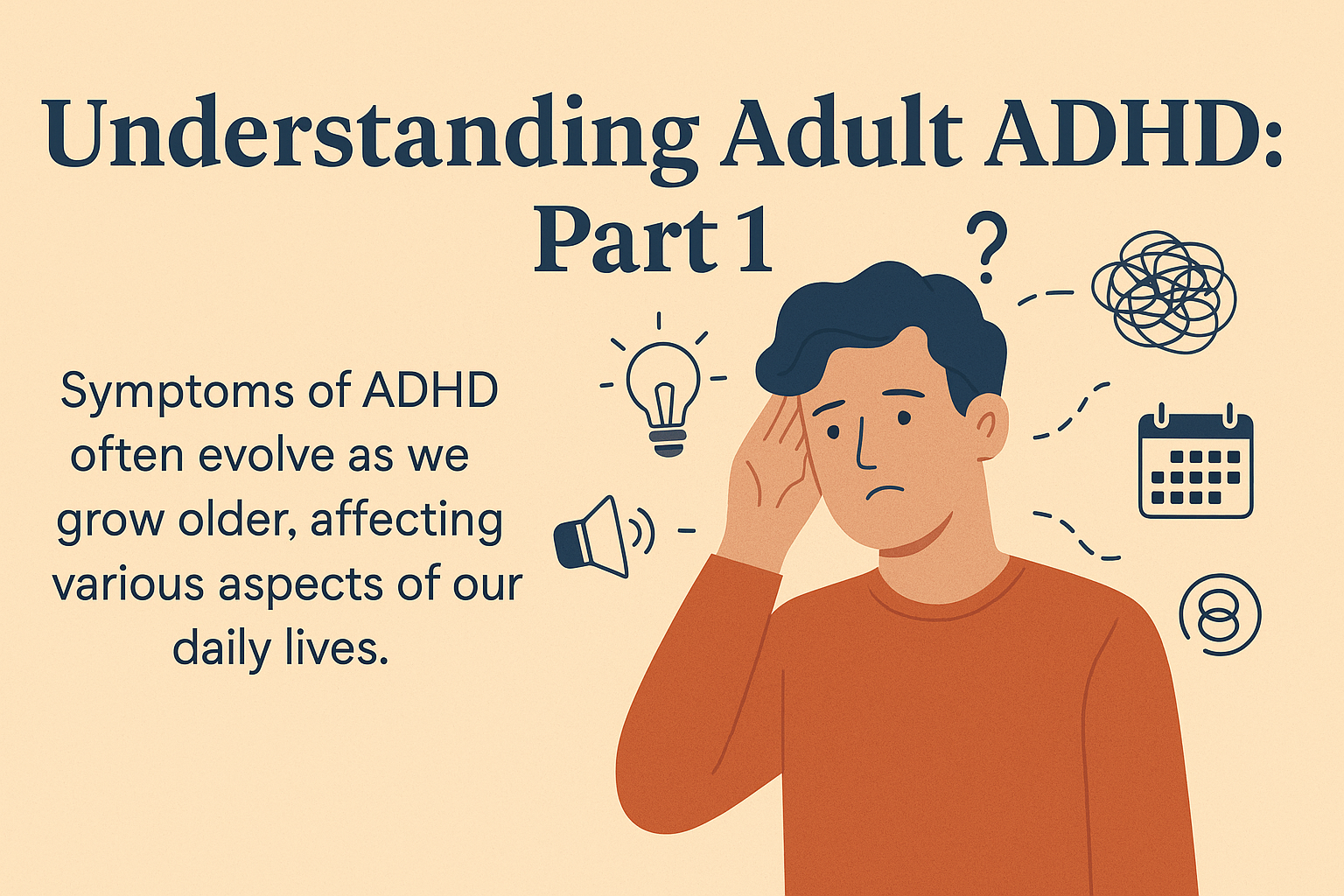Website designed with the B12 website builder. Create your own website today.
Start for free
Disclaimer: I’m not a medical professional. I’m a mental health enthusiast who loves learning and sharing what I discover. This series comes from research, personal exploration, and conversations with people living with ADHD. If you think you may have ADHD, please talk to a qualified healthcare provider for proper evaluation and guidance.
“I thought ADHD was something kids grew out of.”
That’s the sentence I hear most when people talk about ADHD. It’s usually followed by:
Here’s the thing: ADHD isn’t just a childhood thing. For many, it’s a lifelong way of thinking and processing — it just looks different when you’re 35 than when you were 8. And a lot of adults still don’t know they have it.
Why We Miss ADHD in Adults
Experts estimate ADHD affects about 4–5% of adults, but the real number may be much higher. One reason? The stereotype of ADHD as “the hyper little boy who can’t sit still” leaves a lot of people out.
In adults, hyperactivity might be:
Inattentive ADHD — more common in women and girls — often gets mislabeled as being “flaky” or “scatterbrained.”
The Three Presentations of ADHD
ADHD doesn’t show up the same way in everyone:
These can shift over time. Someone who was hyperactive as a kid may now just feel “mentally busy” as an adult.
What’s Going on in the Brain?
From what I’ve learned, ADHD is less about “not trying” and more about how the brain’s executive functions work.
The Cost of Not Knowing
When ADHD goes undiagnosed, adults often blame themselves:
Over time, this can wear down self-esteem and lead to frustration or burnout.
Why Many Adults Seek Answers Later
Some common turning points:
Three Myths to Leave Behind
Myth 1: ADHD comes from bad parenting or too much screen time.
Fact: It’s strongly linked to genetics.
Myth 2: You can’t have ADHD if you did well in school.
Fact: Support systems, intelligence, and hyperfocus can mask it for years.
Myth 3: ADHD is only a disadvantage.
Fact: Many people with ADHD have incredible creativity, energy, and resilience.
Where We Go from Here
This is just the starting point.
In Part 2, we’ll explore how ADHD can shape daily life — from work to home to relationships — in ways that are often misunderstood.
Takeaway for today:
If you’ve always felt like your brain works differently — and not in a “try harder” kind of way — it’s worth exploring. Understanding yourself is the first step to working with your brain instead of against it.